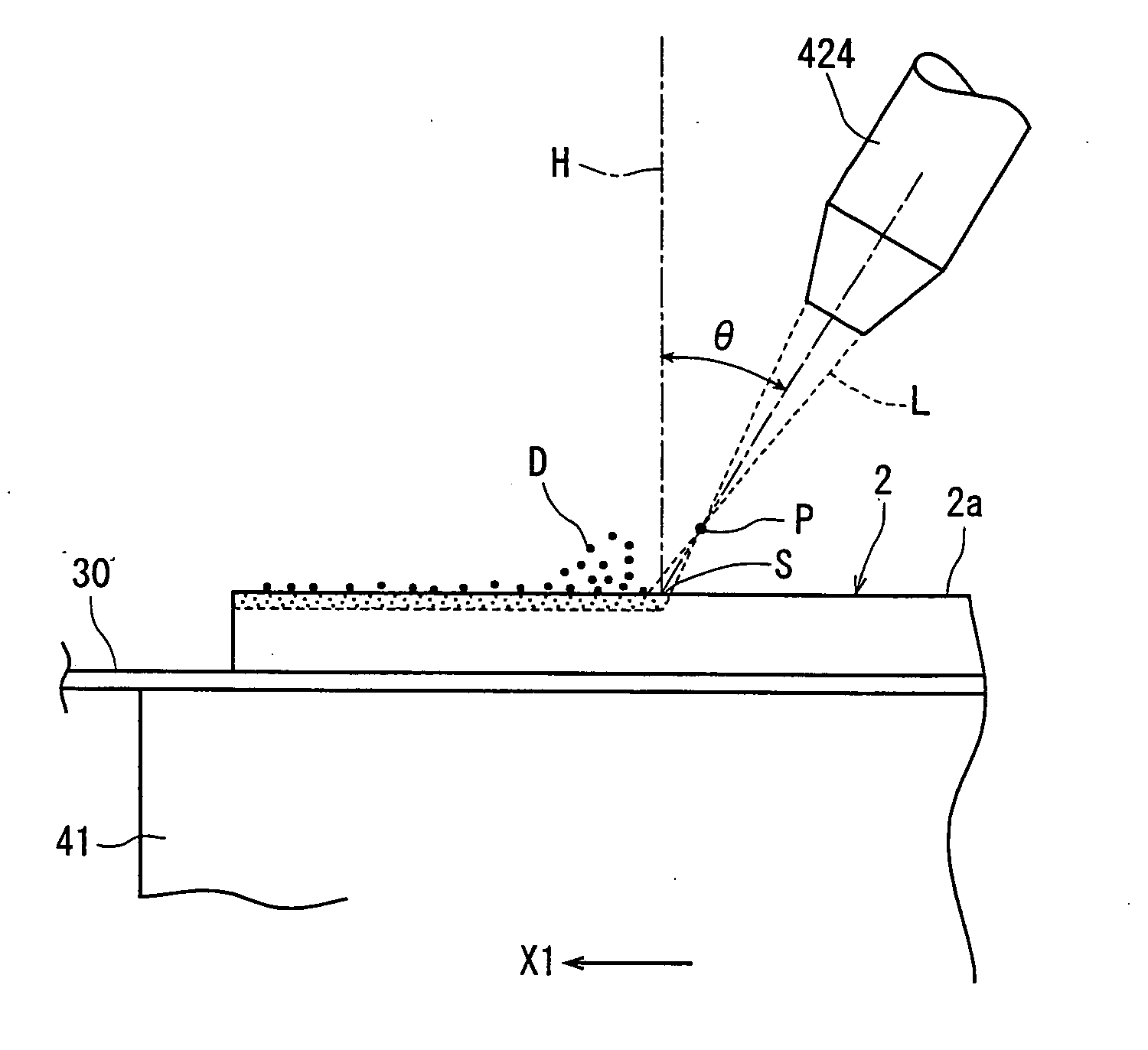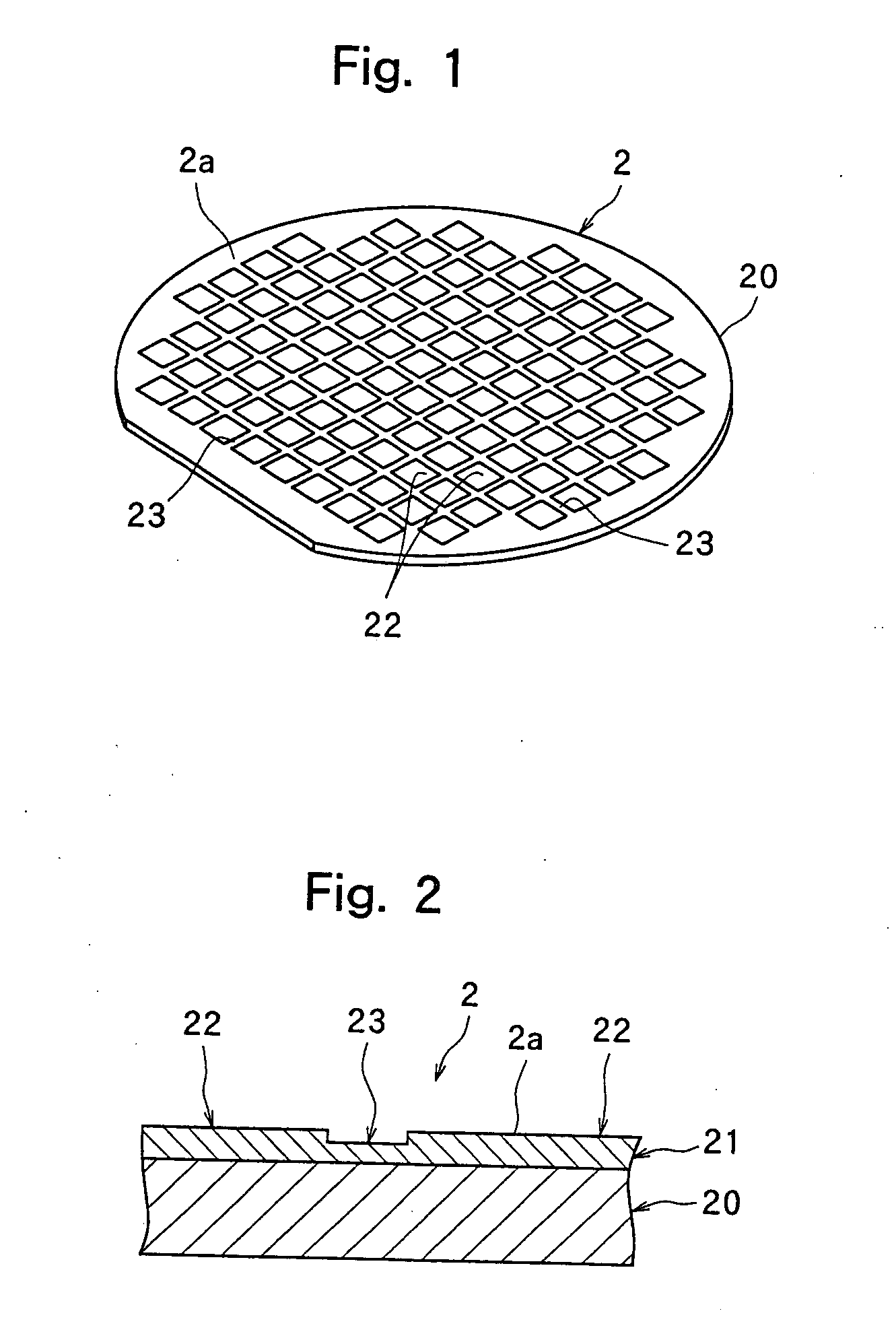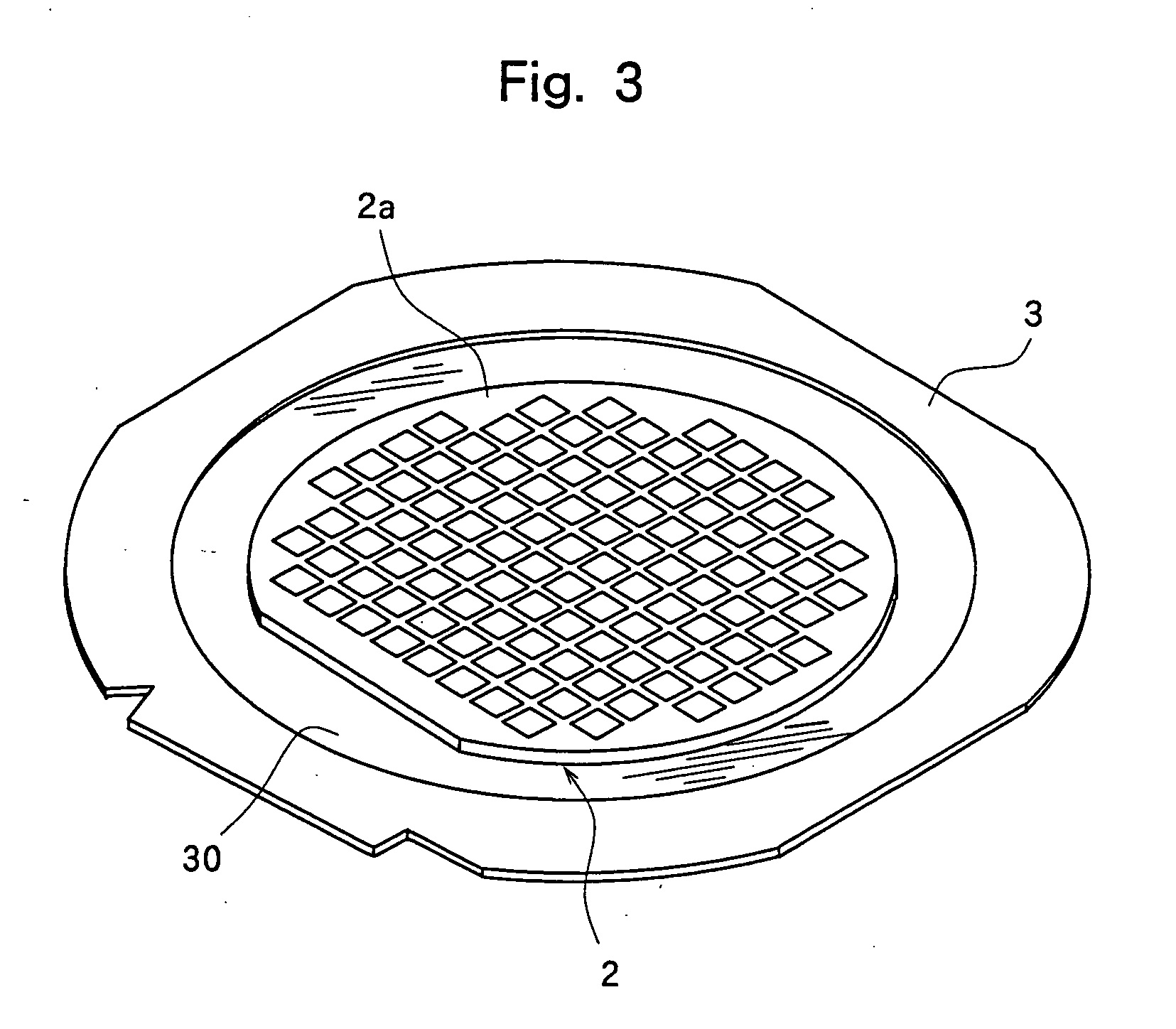Wafer processing method
a processing method and a technology of a wafer, applied in the direction of laser beam welding apparatus, manufacturing tools, semiconductor devices, etc., can solve the problems of destroying the semiconductor chips, causing fatal damage to the semiconductor chips, and unable to cut the above low-k film at the same time, so as to prevent the influence of debris
- Summary
- Abstract
- Description
- Claims
- Application Information
AI Technical Summary
Benefits of technology
Problems solved by technology
Method used
Image
Examples
Embodiment Construction
[0044] A wafer processing method according to the present invention of the present invention will be described in detail hereinunder with reference to the accompanying drawings.
[0045]FIG. 1 is a perspective view of a semiconductor wafer as a workpiece to be processed by the wafer processing method of the present invention, and FIG. 2 is an enlarged sectional view of the principal section of the semiconductor wafer shown in FIG. 1. In the semiconductor wafer 2 shown in FIG. 1 and FIG. 2, a plurality of semiconductor chips 22 such as IC's or LSI's composed of a laminate 21 consisting of an insulating film and a functional film forming circuits are formed in a matrix on the front surface 20a of a semiconductor substrate 20 such as a silicon substrate. The semiconductor chips 22 are sectioned by streets 23 formed in a lattice pattern. In the illustrated embodiment, the insulating film forming the laminate 21 is an SiO2 film or a low-dielectric insulating film (Low-k film) formed of a f...
PUM
| Property | Measurement | Unit |
|---|---|---|
| incident angle | aaaaa | aaaaa |
| diameter | aaaaa | aaaaa |
| diameter | aaaaa | aaaaa |
Abstract
Description
Claims
Application Information
 Login to View More
Login to View More - R&D
- Intellectual Property
- Life Sciences
- Materials
- Tech Scout
- Unparalleled Data Quality
- Higher Quality Content
- 60% Fewer Hallucinations
Browse by: Latest US Patents, China's latest patents, Technical Efficacy Thesaurus, Application Domain, Technology Topic, Popular Technical Reports.
© 2025 PatSnap. All rights reserved.Legal|Privacy policy|Modern Slavery Act Transparency Statement|Sitemap|About US| Contact US: help@patsnap.com



